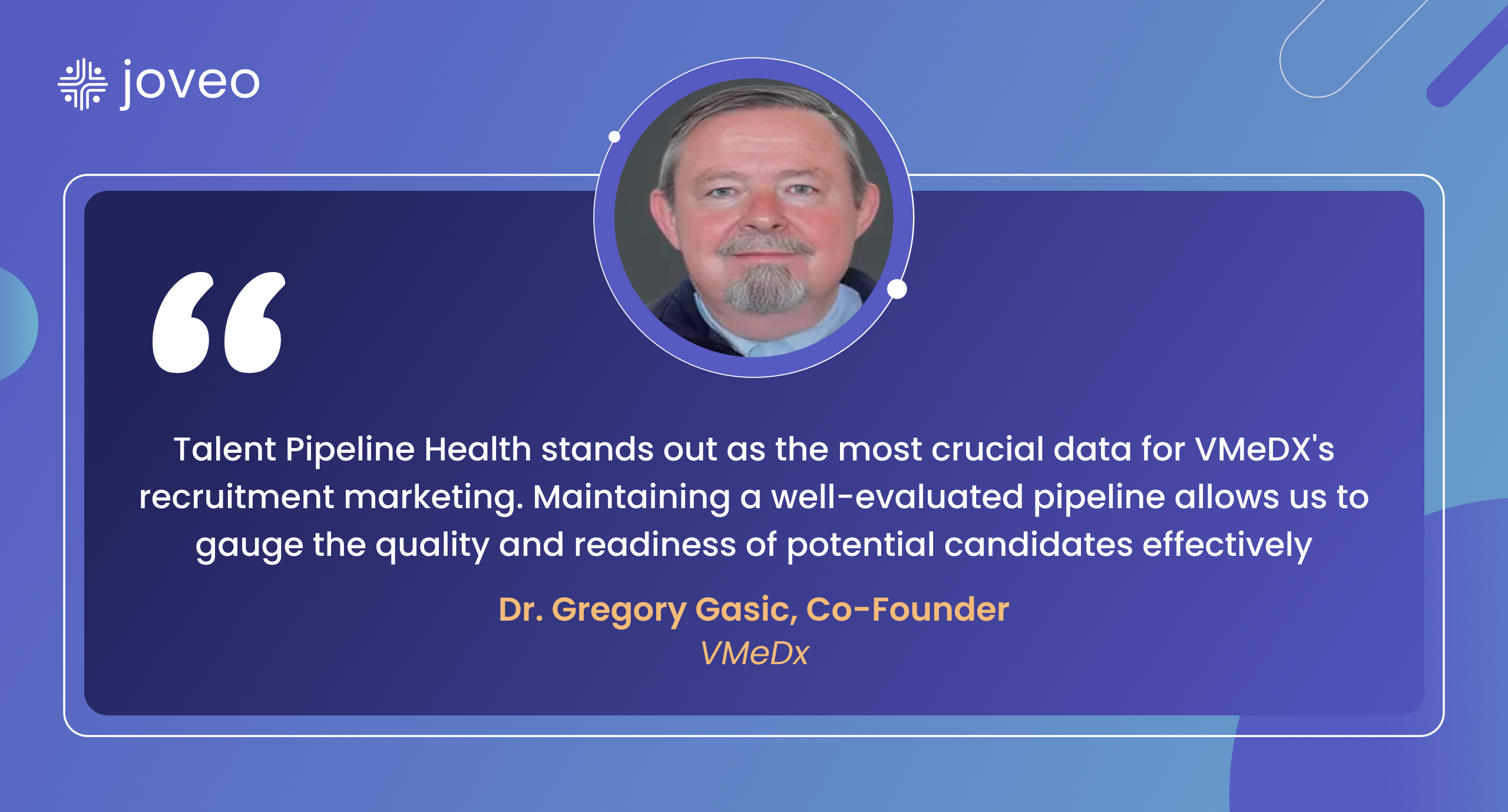In the competitive landscape of talent acquisition, understanding the most valuable recruitment marketing data is key. We’ve gathered insights from Marketing Managers to CEOs, focusing on the importance of tracking recruiter effectiveness rates to determining the best hiring sources. Discover the top ten data-driven strategies these experts deem crucial for organizational success.
Track Recruiter Effectiveness Rates
For a company that primarily outsources recruiting to external recruiters, the most crucial piece of recruitment marketing data is the recruiter effectiveness rate. This metric evaluates the success rate of each recruiter by tracking the number of quality hires they bring in compared to the number of candidates they present.
Understanding recruiter effectiveness is vital because it allows us to assess which recruiters consistently deliver top-tier candidates who fit well within our organization. By analyzing this data, we can identify and continue to collaborate with the most effective recruiters, streamline our recruitment process, and ensure we are investing in the right partnerships to secure the best talent for our organization.
Blake Smith, Marketing Manager, ClockOn Australia
Let’s dive into the numbers, with the latest talent sourcing and recruitment advertising benchmarks!
Ready to Let the Data Do the Talking?
Understand Market Reach
The most crucial piece of marketing data is to understand market reach. Many hiring managers and internal recruitment professionals rely on an assumption that they are broadly capturing the attention of a particular talent market.
However, when captured, the data often proves that many hires are generated through a small amount of market reach.
Chris Percival, Founder & Managing Director, CJPI
Assess Talent Pipeline Health

Talent Pipeline Health stands out as the most crucial data for VMeDX’s recruitment marketing. Maintaining a well-evaluated pipeline allows us to gauge the quality and readiness of potential candidates effectively. This isn’t just about numbers; it’s about assessing the candidates in various engagement stages and their qualifications to ensure they meet our high standards. A robust pipeline translates to a continuous influx of talented professionals ready to join and uphold our company’s objectives.
With a strong talent pipeline, VMeDX can swiftly adapt to the growing demands of the healthcare industry. This readiness is essential in providing top-tier virtual medical assistance. Effective pipeline management means we can seamlessly integrate skilled professionals into our operations, ensuring consistent, high-quality support for our clients. Thus, focusing on talent pipeline health allows us to maintain our reputation as a trusted partner in transforming healthcare operations.
Dr. Gregory Gasic, Co-Founder, VMeDx
Focus on Quality of Hire
Quality of hire stands out as the most crucial piece of recruitment marketing data for our success. This metric goes beyond just filling positions quickly or cheaply. It focuses on whether new hires positively impact the organization. Tracking performance reviews, retention rates, and overall contribution to company goals provides insight into the real value each new team member brings.
Evaluating the quality of hire ensures we’re not just bringing in talent, but the right talent. This approach aligns with long-term growth, maintaining a high standard within the team, and ultimately driving better business outcomes. When hires thrive and stay longer, the overall stability and efficiency of the team improve significantly.
John Gluch, Owner, Gluch Group
Evaluate Candidate Fit and Retention

In our recruitment efforts at Custom Neon, the most crucial data point we focus on is the quality of hire. This metric isn’t just about filling positions but ensuring that the candidates we bring on board are the right fit for their roles and our company culture. Quality of hire is evaluated through factors such as performance ratings in the initial months, cultural fit assessments, and retention rates.
This data helps us refine our recruitment strategies, ensuring that our hiring processes are not only effective in attracting talent but also in securing individuals who will drive our business forward and thrive within our team. It’s a critical measure that directly impacts our organizational growth and employee satisfaction.
Jessica Munday, People and Culture Manager, Custom Neon
Analyze Candidate Engagement Metrics
The most crucial piece of recruitment marketing data for MyTurn’s success is the candidate engagement metrics. I firmly believe that understanding how candidates interact with our job postings, emails, and other forms of communication provides invaluable insights.
This data helps us refine our strategies to better capture the attention of top talent and ensure our messaging resonates with them. High engagement rates typically indicate that our content is compelling and relevant, which is essential for attracting quality candidates.
By continually analyzing and optimizing these metrics, we can enhance our effectiveness, reduce time-to-hire, and ultimately place the best candidates more efficiently.
Amit Doshi, Founder & CEO, MyTurn
Identify Top Sources of Hire
The most crucial piece of recruitment marketing data for our organization’s success is the source of hire. Understanding where our best candidates are coming from helps us allocate our resources effectively and optimize our recruitment strategy.
Why It’s Crucial:
Resource Allocation: By identifying the most effective channels (e.g., job boards, social media, employee referrals), we can invest more in the sources that yield the highest quality candidates, ensuring a better return on investment.
Quality of Hire: Knowing the source of our top performers allows us to focus on platforms that consistently provide candidates who not only fit our requirements but also thrive in our organization.
Recruitment Efficiency: Understanding which sources produce the best candidates can streamline our hiring process, reducing time-to-hire and minimizing recruitment costs.
Strategic Insights: Analyzing source of hire data helps us understand trends and patterns, allowing us to stay ahead of the competition and adapt our strategies as needed.
By focusing on the source of hire, we can continuously refine our recruitment marketing efforts to attract top talent efficiently and effectively, ultimately driving our organization’s success.
Ana Alipat, Recruitment Team Lead, Dayjob Recruitment
Perfect your talent sourcing with community outreach, DE&I events, employee referrals, and more.
Make Successful Talent Sourcing a Reality!
Monitor Job Posting Click-Through Rates
To some extent, the data that will be most beneficial for an organization’s success depends on their goals and the kind of insight they’re hoping to gain from the data. For our purposes as a recruitment firm, I find that the click-through rate for both job advertisements and job postings is a very critical metric. This can be valuable in an overall sense, but is also a useful thing to track for each specific marketing channel you utilize, as well as for specific roles or types of roles that you post.
What you learn from the click-through rate is how much your posting is catching job seekers’ attention. This can tell you a host of useful things. For one, it’s an indication of whether you’re advertising the job in the right places. Comparing the CTR across different channels can tell you which one is the best for that type of posting, which is useful information to inform and refine your future marketing efforts. It can also help you determine if you’re targeting ads and postings to get in front of the right audiences.
Finally, it’s a useful metric to use in conjunction with other data to gain further insights. For instance, if you have a high CTR but a low conversion rate, this is a sign you’re losing applicants at some point during the process. This could be an issue with the wording of the posting, the length or complexity of the application process, or the details of the job itself—you can’t tell exactly what’s wrong from this data alone. That said, it does tell you that people who are interested in the job initially aren’t following through on applying, helping you to at least narrow down where in the process you need to make improvements.
Matt Erhard, Managing Partner, Summit Search Group
Measure Candidate Conversion Rates

For our organization, the most crucial piece of recruitment marketing data is the candidate conversion rate. This metric measures the effectiveness of our recruitment strategies in converting prospective candidates into applicants and, ultimately, hires. Thus, we can evaluate the performance of our recruitment channels, campaigns, and messaging to identify what resonates most with our target audience.
Understanding the candidate conversion rate allows us to optimize our recruitment marketing efforts, focusing resources on channels and tactics that yield the highest conversion rates while refining or eliminating those that underperform. Monitoring this data enables us to assess the overall health of our talent pipeline and make data-driven decisions to ensure a steady flow of qualified candidates for current and future hiring needs.
Candidate conversion rate data provides valuable insights into the effectiveness of our employer brand and the candidate experience we offer. A high conversion rate suggests that our employer brand and value proposition resonate with candidates, compelling them to take the next steps in the application process.
Conversely, a low conversion rate may indicate potential issues with our messaging, application process, or candidate engagement strategies that need to be addressed. By analyzing this data in conjunction with other recruitment metrics, such as application completion rates and time-to-fill, we can gain both a general and specific analysis of our recruitment funnel and implement strategies to attract, engage, and convert top talent effectively.
Michael Hurwitz, CEO and Co-Founder, Careers in Government
Determine Best Hiring Sources
The most essential piece of recruitment marketing data is knowing where your best hires are coming from, or the “source of hire” data. Different sources may attract different types of candidates.
This information is key because it helps you spend your recruitment budget wisely, find higher-quality candidates, boost your employer brand, plan better recruitment strategies, and make decisions based on solid data.
This includes tailoring job postings and marketing efforts to the platforms that are most effective, which can improve overall recruitment outcomes. By focusing on the channels that bring in top talent, you can attract the right people more efficiently and cost-effectively.
Grant Smith, Global Recruitment Marketing Specialist
See us in action to boost your company’s productivity. Follow us on Twitter and LinkedIn for more hiring insights!












